Architectural Heritage Photogrammetry - Preserving Small Details
 Lukas Zmejevskis
Lukas Zmejevskis

Architectural heritage preservation is a critical component of cultural heritage conservation. Preserving small details of historic buildings has always been a challenge for conservationists. Photogrammetry is a non-destructive technique helpful in documenting architectural heritage by creating highly detailed and accurate three-dimensional models. In this article, we will explore the process of using photogrammetry to scan small architectural features of houses for preservation purposes. By taking numerous overlapping photos, we can create a 3D model that accurately captures every minute detail of the architectural feature, providing an invaluable resource for future restoration and conservation efforts.
Equipment
The main piece of equipment necessary for photogrammetric scanning is an imaging device. Anything from a smartphone to a professional drone or a camera is suitable for photogrammetry. The better your camera will be, the easier it will be to obtain great-quality photos and, in turn, 3D models. Suppose you only have a phone with a decent camera. That will be enough to start; you do not need expensive equipment to get usable results.
Additionally, you may need accessories for your individual use case. A tripod may be necessary where lighting conditions are not excellent. Monopod, or a stick, is helpful for places you can not reach by hand. You may also need a remote controller or an app to trigger your camera while the camera body is unreachable.
Lastly, you will need a measuring tape or a ruler to measure the scene you are scanning. This way, we can add scale to the 3D model later. Alternatively, you can include a scale bar during the capture so it is in the scene itself if it is possible.
P.S. In this case, we will not use any lighting setups and will rely on natural lighting only. With small-scale outdoor scans, lighting is usually less of an issue if we work during the daytime. Even shadowy areas will have enough light for good-quality photos. If not, we can work around that using a tripod and more prolonged exposures. We will explore lighting for photogrammetry in future articles.
Scanning Fundamentals
Photogrammetry is possible when a scene is visible from many angles and with high overlap. The overlap we strive to achieve is 80 percent between adjacent photos. Regarding manual and handheld photogrammetry, the overlap is a guideline that can vary, and we do not have to stress about the exact 80 percent overlap. To achieve approximately 80 percent overlap between shots, we need to move the camera for about 1/5th to 1/6th of the view visible in the viewfinder or screen. For that, the rule of thirds overlay is handy and available in all cameras.
Besides overlap, image quality is the second most crucial factor. All images must be in focus and free of motion blur. Blurry photos will not work for photogrammetry and will introduce artifacts or fail to reconstruct. You are set for success if you can ensure both of these factors. If you are already a photographer or an enthusiast, you can also take advantage of raw photos. With raw images, you can adjust the white balance, contrast, and exposure without losing image quality and make the whole data set incredibly consistent.
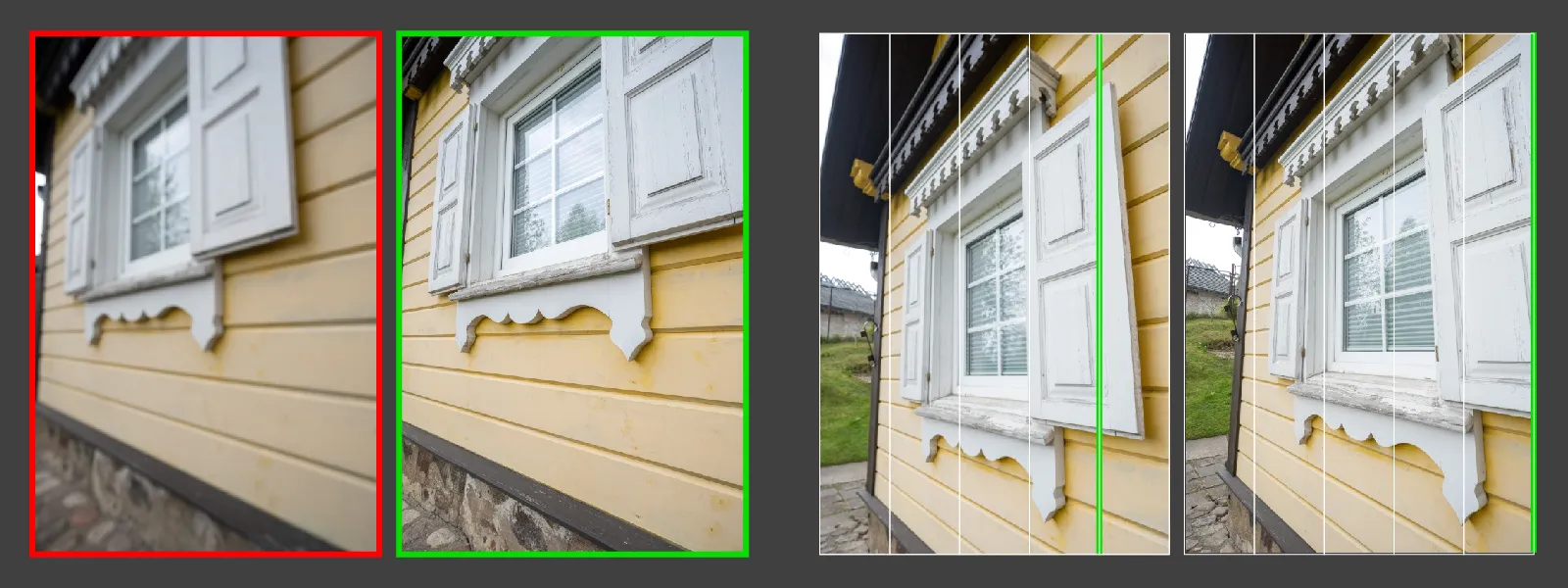
Photogrammetry Fails and Issues Part 1
Photogrammetry Fails and Issues Part 2
Processing
We will be processing our data in Pixpro photogrammetry software. Processing settings matter much less than the captured data. If all capture aspects were done well, “medium” or “default” settings will do fine in most photogrammetry software.
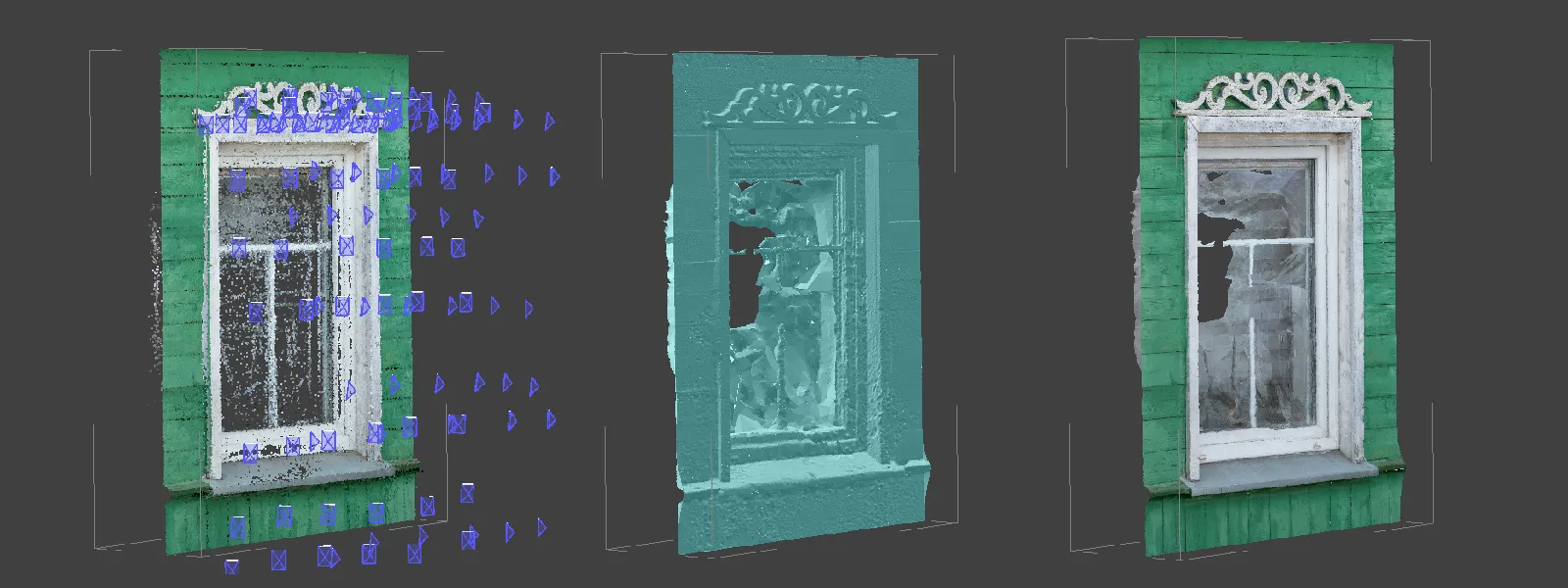
Additional actions the user makes to maximize quality and aesthetics matter much more. Cropping a dense point cloud before mesh generation can yield better results, or trimming the 3D model for presentation can look much better. Running additional cleaning steps can help tools. The general advice is not to get hung up on “ultra-high” quality presets and just let the software do its thing and see what manual input can do to help maximize the quality.
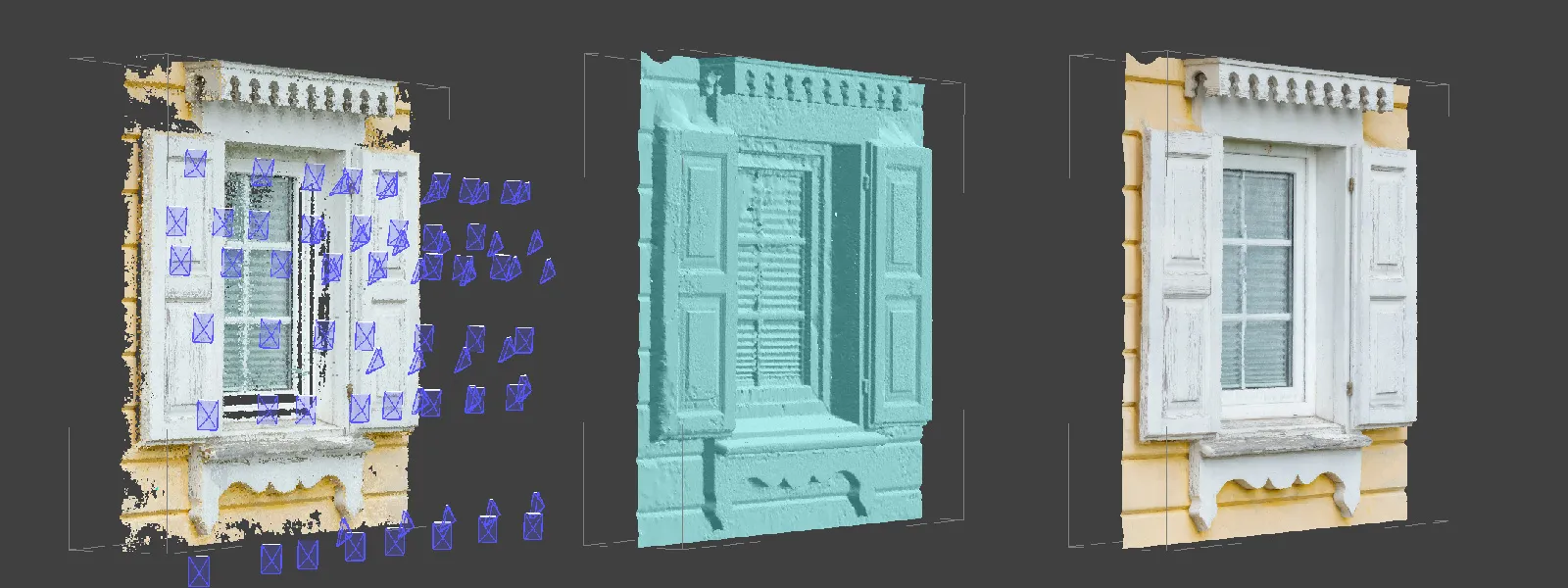
Results
We made a few examples we found in the historical national park of Trakai. These are wooden window shutters on houses in the old town, where non-conformal design buildings are forbidden. Even if a new building replaces an old one deemed outdated for safety reasons, the original look can be preserved by capturing such details and giving this data to architects. A scaled 3D model does not leave anything unanswered. Scale, color, texture, and placement are precise for each scene and object. Artisans can recreate these ornaments with modern or traditional methods so that the original historical look will live on the facades of modern houses.
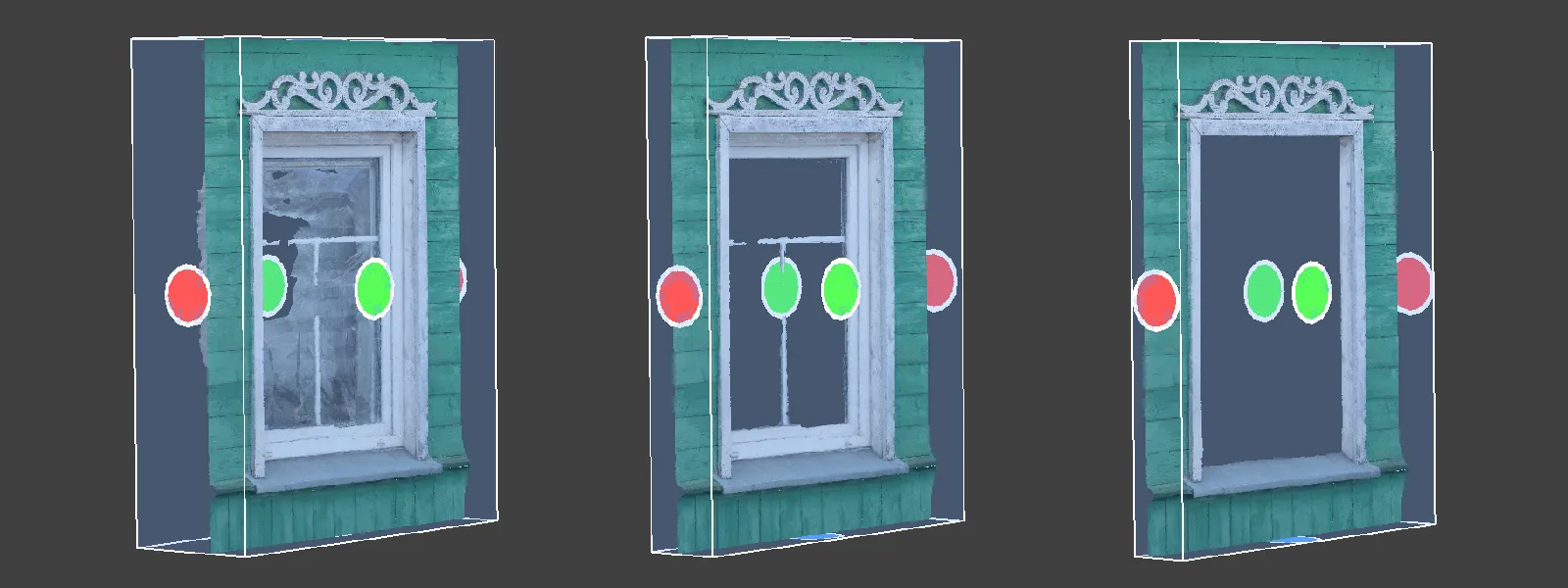
Conclusion
Photogrammetry is an effective tool for preserving small details of architectural heritage. By taking numerous overlapping photos and creating a highly detailed 3D model, we can accurately capture every minute detail of an architectural feature, providing invaluable resources for future restoration and conservation efforts. Photogrammetric scanning is relatively easy and inexpensive, requiring only an imaging device and some essential accessories. With photogrammetry, we can preserve our cultural heritage and pass on the beauty and richness of our architectural history to future generations.
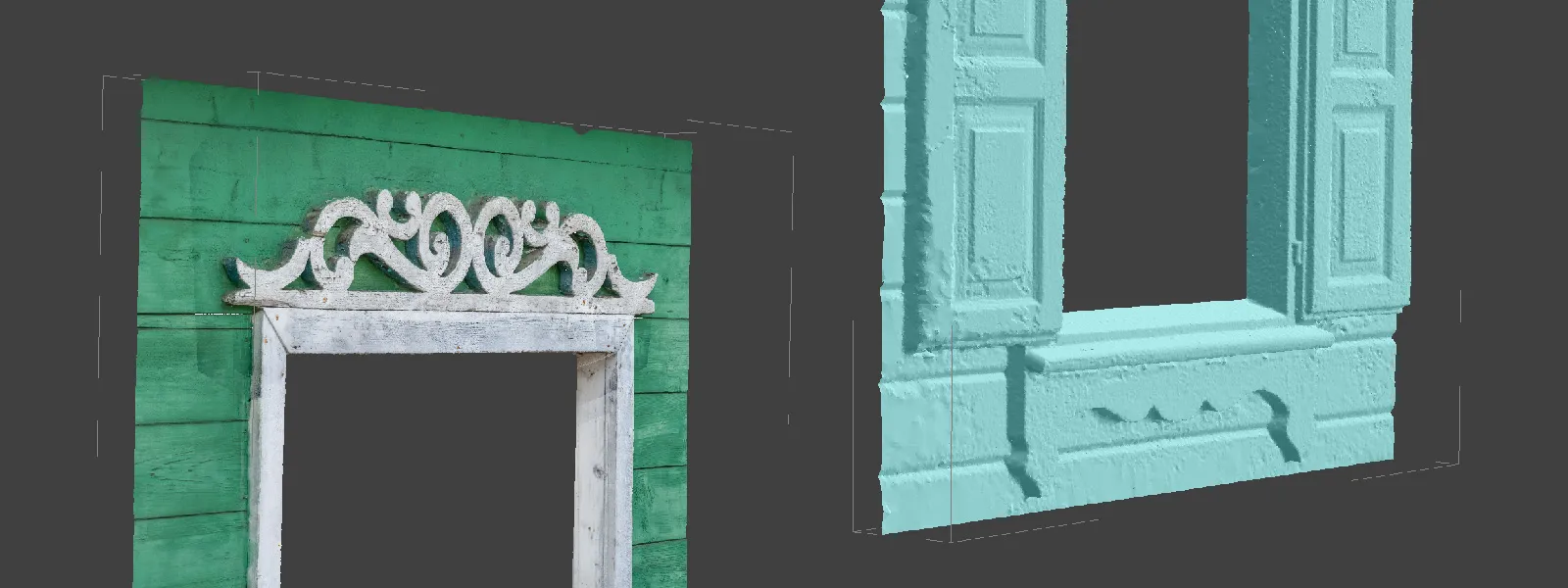
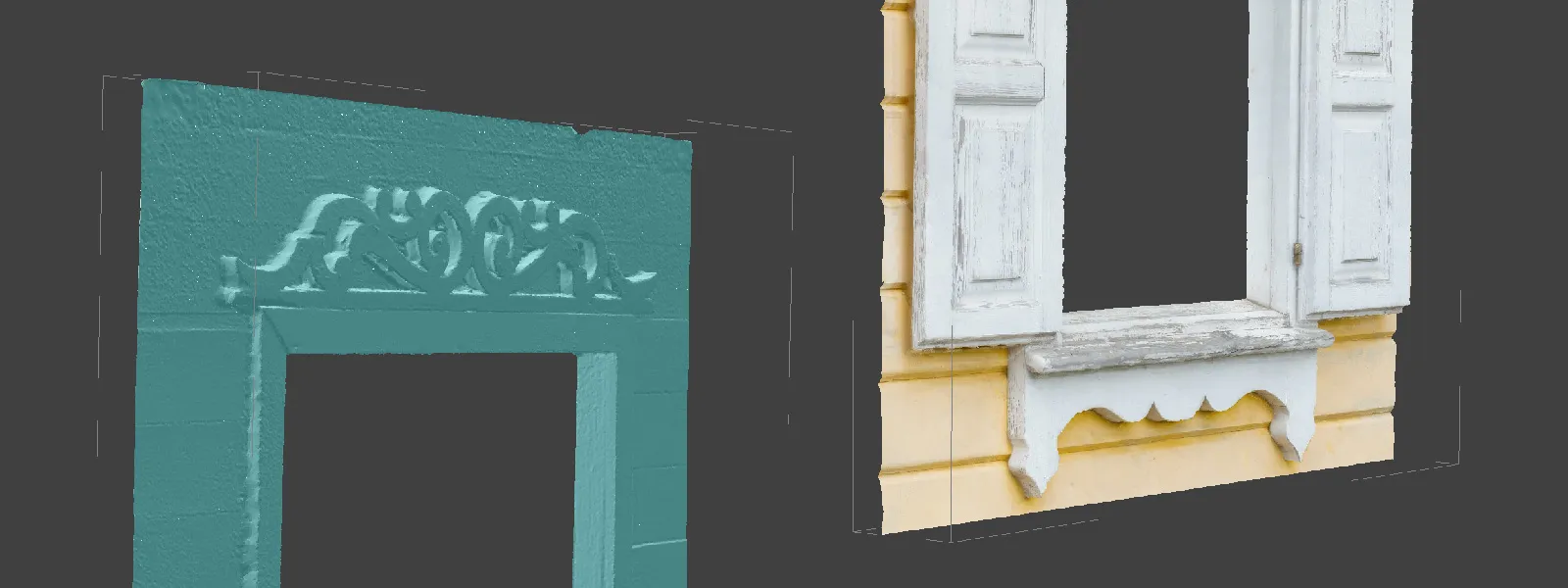

Photographer - Drone Pilot - Photogrammetrist. Years of experience in gathering data for photogrammetry projects, client support and consultations, software testing, and working with development and marketing teams. Feel free to contact me via Pixpro Discord or email (l.zmejevskis@pix-pro.com) if you have any questions about our blog.
Related Blog Posts
Our Related Posts
All of our tools and technologies are designed, modified and updated keeping your needs in mind

Photogrammetry 202 - Pixpro Blog Index
In our final blog post of the year, we are indexing Pixpro photogrammetry blog posts from the last two years. After publishing regularly for a while, things tend to scatter: posts about workflows, Pixpro features, hardware tests, random experiments, use cases, comparisons.
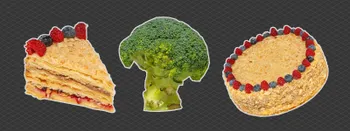
The Cake is 3D – Food Photogrammetry Guide
Scanning foodstuffs can be fun and sometimes even useful. 3D asset creation for VFX, VR, and gaming industries is the most obvious use case, while showing off your homemade cake to your friends and family in 3D is more of a niche proposal.
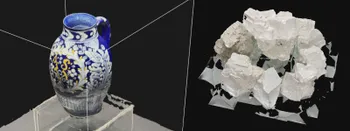
Travel Photogrammetry - More Fun than 2D Photos
Sometimes a 2D photo does not do justice to a moment or a place, and you wish you had something more… dimensional. Something that captures shape, texture, and the little details that flat images tend to flatten even more.
Ready to get started with your project?
You can choose from our three different plans or ask for a custom solution where you can process as many photos as you like!
Free 14-day trial. Cancel any time.
Welcome to Pixpro
Sign in
And access your account.
.svg@webp)